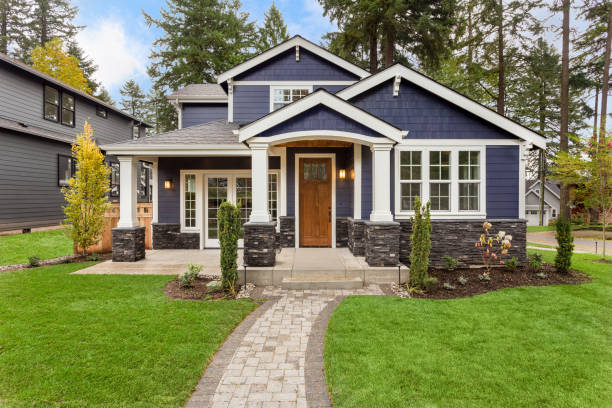For almost two centuries, concrete has been at the forefront of architecture. It is a mixture of water, sand and rocks of different sizes, and portland cement. It then forms a paste that hardens through hydration. From there, it solidifies and becomes a rock-like material called concrete.
Right after mixing the materials, the paste appears malleable. But, concrete hardens and becomes durable. As such, a broad range of architectures and designs have been using concrete.
Note that the amount of water affects the durability of concrete. The preferred ratio of concrete materials is 15-20% water, 10-15% cement, and 65-75% rocks and sand.
Now, you already have a glimpse of the basics of concrete. Below are the common concrete finishes for your building:
1. Slick Troweled Concrete
Cement finishers can walk on slick troweled concrete because of its hardened quality. The cement mason creates it using a steel hand trowel or machine to cover an exposed surface. As its finishing is very hard, it requires more labor and time.
Many use slick troweled concrete finishes for garage and basement floors. This type of finishing is also common among floors in warehouses and storage areas. It is also ideal for front porches.
It is easy to clean slick troweled concrete surfaces. You can sweep off the dirt, hose it down, or mop the surface. But, from the name itself, you can see that it’s slick when wet and may cause accidents.
2. Exposed Aggregate Concrete
Instead of limestone, exposed aggregate concrete uses river stones. You can see different colors of stones, such as green, blue, brown, and red. Aside from its aesthetic appeal, it is skid-resistant, making the pavement surfaces safer. The pouring and finishing of this concrete finish are like that of the slick trowel concrete.
You have to use a retarding chemical on the concrete’s surface and leave it overnight. After which, you must wash it with water and a soft-bristle scrub broom to remove the residues on the surface. The chemical is not deep penetrating, so it does not affect the other parts. You can see the elegance of the finished product once you’ve gotten rid of the paste and all residue.
Keep in mind that the sizes of the stones have an impact on the surface. The larger stones create a more expansive space for dirt and debris. Hence, it will be harder for you to move furniture or walk on it in formal wear.
3. Decorative Concrete
Decorative concrete is common among enhancements of existing concrete finishes. Sprays, acids, epoxies, binders, and stains are often in play. As such, it can change the appearance of the existing concrete surface.
4. Broom-Finished Concrete
The broom-finished concrete contains limestone. Workers use a specialty broom attachment to close the concrete. With this, they can create a distinct rough texture on the concrete surface. The cement mason does not always have to close the surface by hand. But, many broom projects need hands for closing before placing the specialty broom.
This type of concrete finishing is aesthetically pleasing and has good traction. It is ideal for such places as Toronto, which is known as the slush capital of Canada. But because of its rough texture, broom-finished concrete is harder to clean.
5. Stamped Concrete
Many people also know stamped concrete as textured or imprinted concrete. With its smaller aggregates, many use it to emulate stones and woods. Its patterns and colors make it a popular choice for enhancing driveways and pool decks. Also, it has release agents, so the stamps do not stick to the concrete.
If you are looking for stamped concrete in Toronto, there are several places in the city where you can find it. Its cost ranges from $8 to $12 per square foot. But more elaborate projects can go as high as $18. Its finishing process is the same as the previous types. The concrete is also closed by hand before the stamps create the desired effect on the surface.
As mentioned, stamped concrete creates a stunning image on concrete surfaces. As such, it requires the most time, labor, and cost. Yet, the finished product makes it the most appealing concrete finishing. There are a variety of patterns and colors depending on your needs and preferences.
Choosing the type of concrete finishing depends on your budget, needs, and preferences. They have differences, but they give an aesthetic appeal to any concrete surface.

